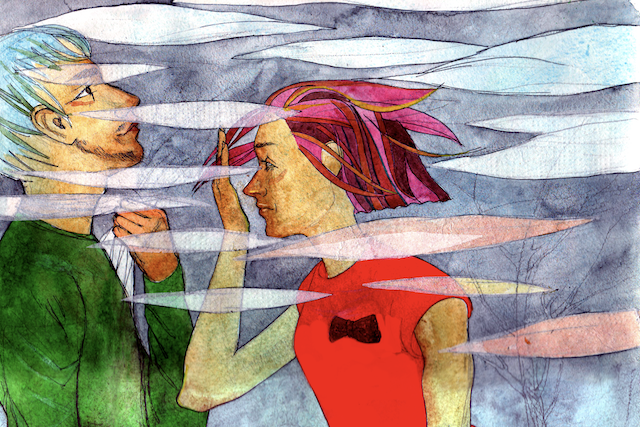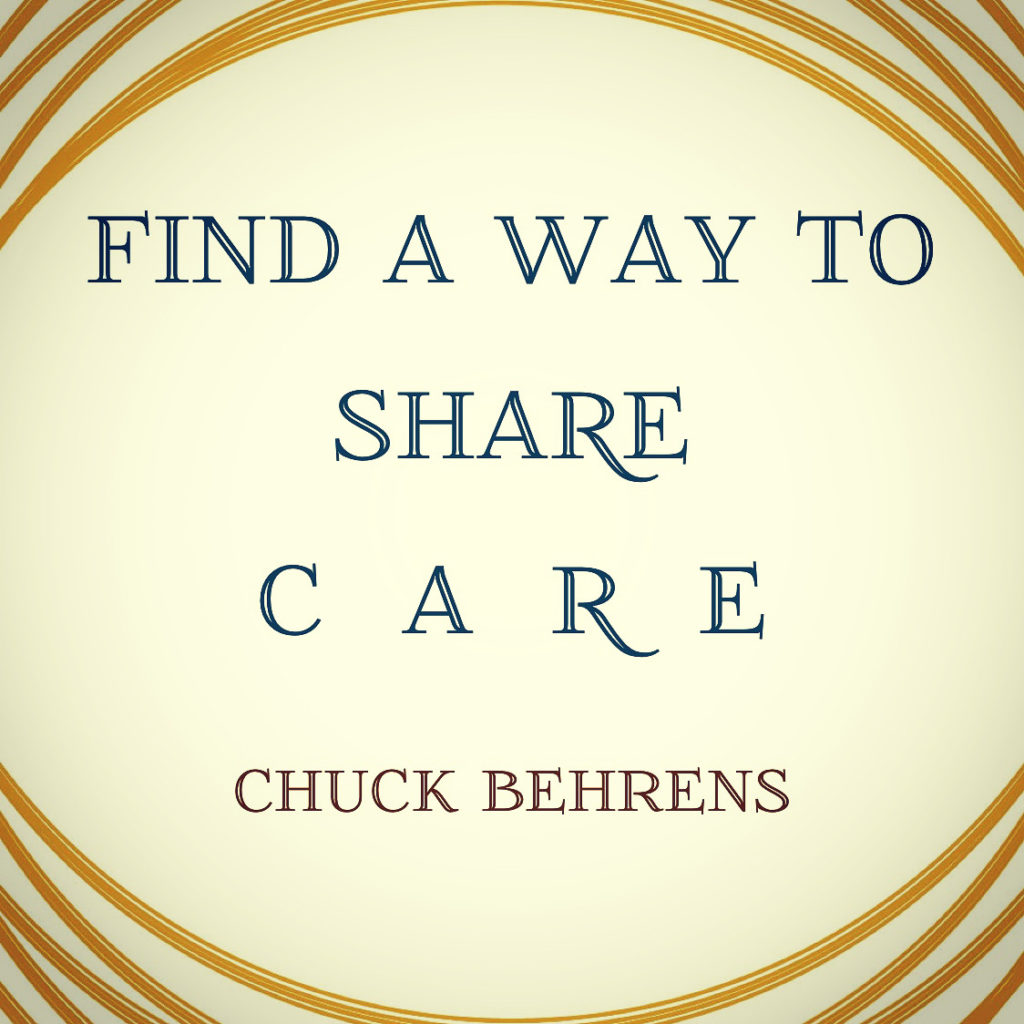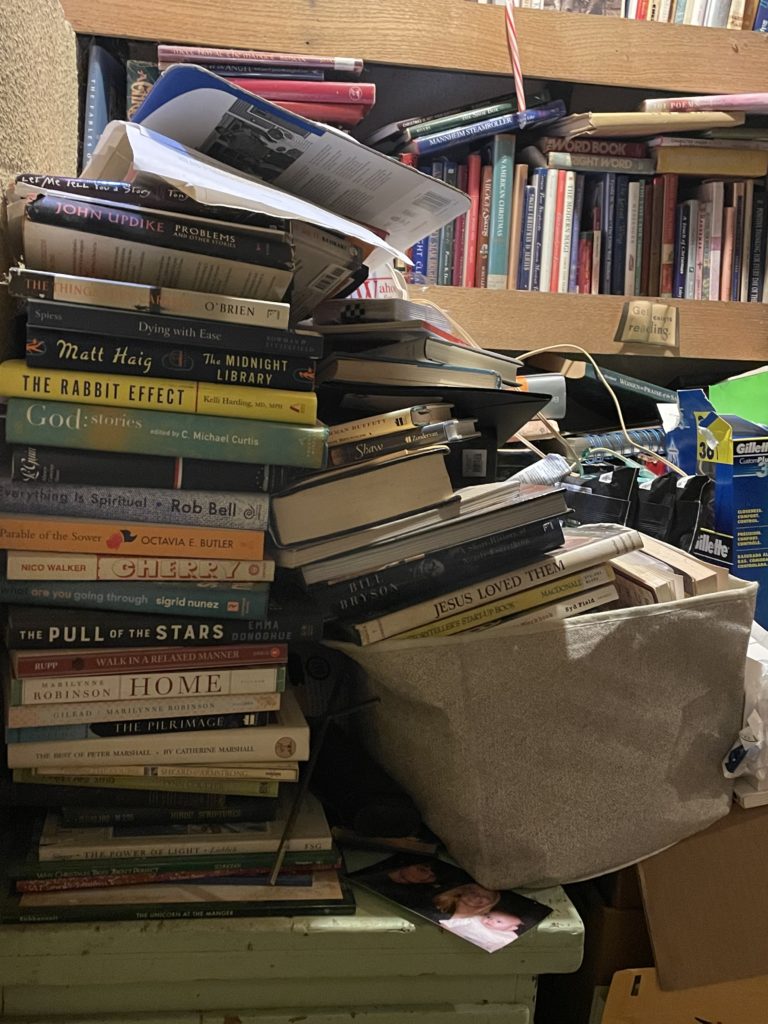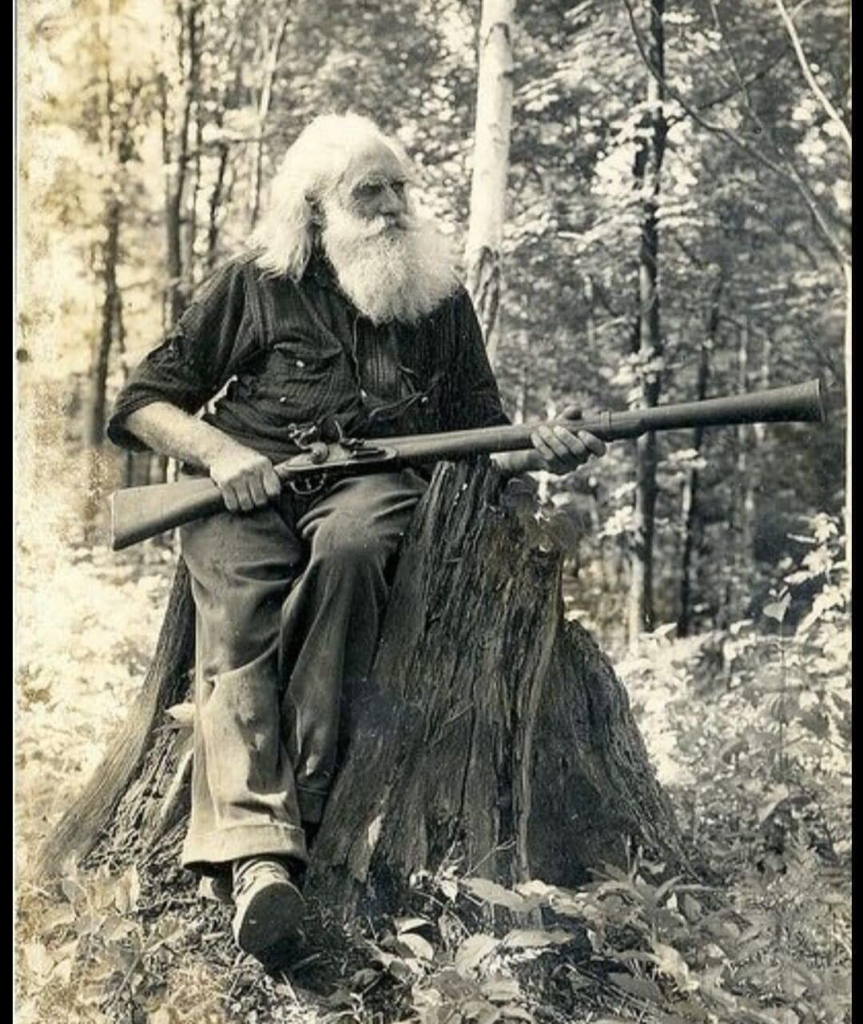|
|||||||
|
Caught In The MIDDLE

At best it’s really blurry
and never fully
picture-perfect-clear. . .
DO YOU KNOW FOR SURE JUST WHO YOU ARE

Are you more
E X T R O V E R T E D
Are you more
I N T R O V E R T E D
Are you more
A M B I V E R T E D
Do you really know
Do you really care

5 Signs You Might Be an Ambivert
According to experts, many of us fall into this
category. . .
Sira M.Follow was kind of wondering if you were wondering what it truly might be like to be caught in THE MIDDLE; The In-Between of Extroverted and Introverted. Much in the same fashion of Jeff Foxworthy’s YOU MIGHT BE A REDNECK IF. . .
We’ve all self-identified as introverts or extroverts at least once. However, some of us were probably wrong with that identification.
Bestselling author Travis Bradberry explains that personality traits exist along a continuum, and the vast majority of us aren’t introverts or extroverts — we fall somewhere in the middle. And the word ambivert is used to define people who don’t lean too heavily in either direction.
As psychotherapist Ken Page, LCSW explains: “Many of us are ambiverts to some degree, and all of us are located somewhere along the spectrum between introversion and extroversion.”
Now you might ask, what does ambivert exactly mean? According to the Oxford Dictionary, the definition of ambivert is:
“A person who has a balance of extrovert and introvert features in their personality.”
As Bradberry puts it: “Ambiverts have an advantage over introverts and extroverts. Since their personality doesn’t fall into one of the two extremes, they have an easier time adjusting their approach to people based on each situation.”
Here are five signs you might be an ambivert.
You Feel That Spending Time With
Others Sometimes Exhausts You and
Other Times Energizes You
A few weeks before the pandemic, a friend of mine invited me to her place to have dinner on a Friday night. I was tired, but happily accepted the invite, as I assumed it was going to be a quiet evening, just the two of us.
When I arrived at her place, there were already eleven people there. I wasn’t expecting that, and I immediately felt overwhelmed. It’s not that I don’t like to be around people, but that night I felt exhausted and didn’t have the mental energy to interact with people I didn’t even know.
I spent the evening looking forward to going back home. I was craving some alone time. After two hours I decided to leave, saying that I had had a very busy week and was really tired — which was the truth.
The next Friday afternoon I felt the need to spend some time with other people, so I invited a few friends to my place for dinner. It was a similar situation: I had had a long week, and again I was mentally exhausted. The only difference was that I had been working from home and had spent almost the entire week alone. This time I felt the need to be around people. And I realized something important:
Sometimes, to recharge my batteries, I need some “me time,” while at other times spending time with people is what actually gives me energy.
According to Sarah Regan, this is something ambiverts tend to have in common. They can get energized both by being around others, like extroverts, and by spending recharging time alone like introverts. Sometimes they enjoy alone time and social time equally, or the one they enjoy the most fluctuates depending on what’s going on in their life.
Sometimes You’re Talkative and Other
Times You’re Very Quiet
A friend of mine, Nadia, is the best example of what an ambivert is. For example, like me, she says that sometimes what energizes her is socializing while at other times she craves alone time because it helps her recharge.
Another thing I’ve noticed about her is how sometimes in group situations she’s talkative while at other times she practically doesn’t say a word. When she is more talkative, she actively interacts, asks many questions and shares details about herself as well. When she is quiet, she enjoys listening to others, but barely talks.
And as Ronald E. Riggio, Ph.D. explains in an article published in Psychology Today, people like Nadia — that is, those who are sometimes talkative, and other times not — might be ambiverts.
Some People Describe You as an
Introvert While Other People as an
Extrovert
I remember when I was attending college, one day a friend of mine, Naomi, told me this:
“A few days ago I was with Elena. We were talking about you. She told me she really likes you, and the way you are, but she thinks you should open up more. She thinks you’re very quiet and don’t talk too much about yourself. However, I see you in a completely different way. I told her she doesn’t know you as well as I do. You’re always full of energy and it’s always nice talking to you and listening to your stories.”
This is what I replied: “You’re both right. I can be full of energy and talk a lot at times, and be very quiet at other times. It depends on many factors, like my level of energy at a specific moment, and the people I’m with. I think you know me a bit better than she does, but still, what Elena said is true, I’m often very quiet.”
You Enjoy Being the Center of Attention,
but Not For Too Long
If there’s something I don’t enjoy, it’s having to stand still in front of a cake, on the day of my birthday while everyone is singing Happy birthday and staring at me. The song is only around twenty seconds but as I sit there, blushing, it feels more like five minutes.
I was once talking about this with my friend Nadia, and she told me she feels the exact same way. When it’s her birthday she just blows out the candles before anyone can sing Happy Birthday, as, like me, she can’t bear standing in front of a group of people singing and staring at her while she doesn’t know what to do. It feels kind of embarrassing — this is how she defined it, and I couldn’t agree more with her.
However, we both agreed on one thing. It’s not that we don’t like to be the center of attention; we actually enjoy it, as long as it doesn’t last too long and it’s not too intense.
For example, I like to be part of a conversation where I can convey my opinion and I feel listened to. Also, I love it when I tell a joke and people laugh with me.
And Nadia told me she feels cared for when people ask her about her violin classes — or when they ask her advice on what to eat, as she’s a nutritionist. However, those are all situations in which there is an interaction, and the attention goes from one person to another — and consequently it’s not overwhelming for us.
You Are Good at Balancing Listening and
Talking
Psychologist and author Brian Little explained in The Huffington Post that ambiverts actually have the best of both worlds: they have the classic introvert’s skills of self-reflection, combined with the extrovert’s outgoing traits.
This make them great communicators because they understand when they have to listen and when they can talk. They’re self-aware, and they correct themselves if they are talking too much. If they feel the person in front of them needs to talk, they let them talk and ask questions.
If you’ve always thought you were an introvert or an extrovert — but also had some doubts sometimes — and recognize yourself in this description, you might be an ambivert.
Ambiverts don’t necessarily recognize themselves in all the above mentioned signs, but probably in the majority of them.
Being an ambivert has its advantages. According to an interesting article published in Healthline, ambiverts might be able to develop strong bonds. The extroverted traits may lead to interacting with more people, while the introverted traits can help connect deeply with others.
And this is a perfect combination when it comes to nurturing meaningful relationships.

So in a our every changing world
where there seems to be a
NEW NORMAL
almost every day
WHERE DO YOU STAND (OUT)
INTROVERT
EXTROVERT
AMBIVERT
. . .Why not
TEST IT
Quiz: Are you an extrovert, introvert or
ambivert?
Adam Grant PhD came up with the following test:
 iStock
iStock
You probably have a hunch about which one you are, but why not take this quiz — from organizational psychologist Adam Grant — and double-check? Knowing your traits will help you figure out how you can best fit and function in the workplace and the world.
ABOUT THE AUTHOR
Adam Grant PhD is an organizational psychologist at Wharton, a #1 New York Times bestselling author and the host of the TED podcast WorkLife.
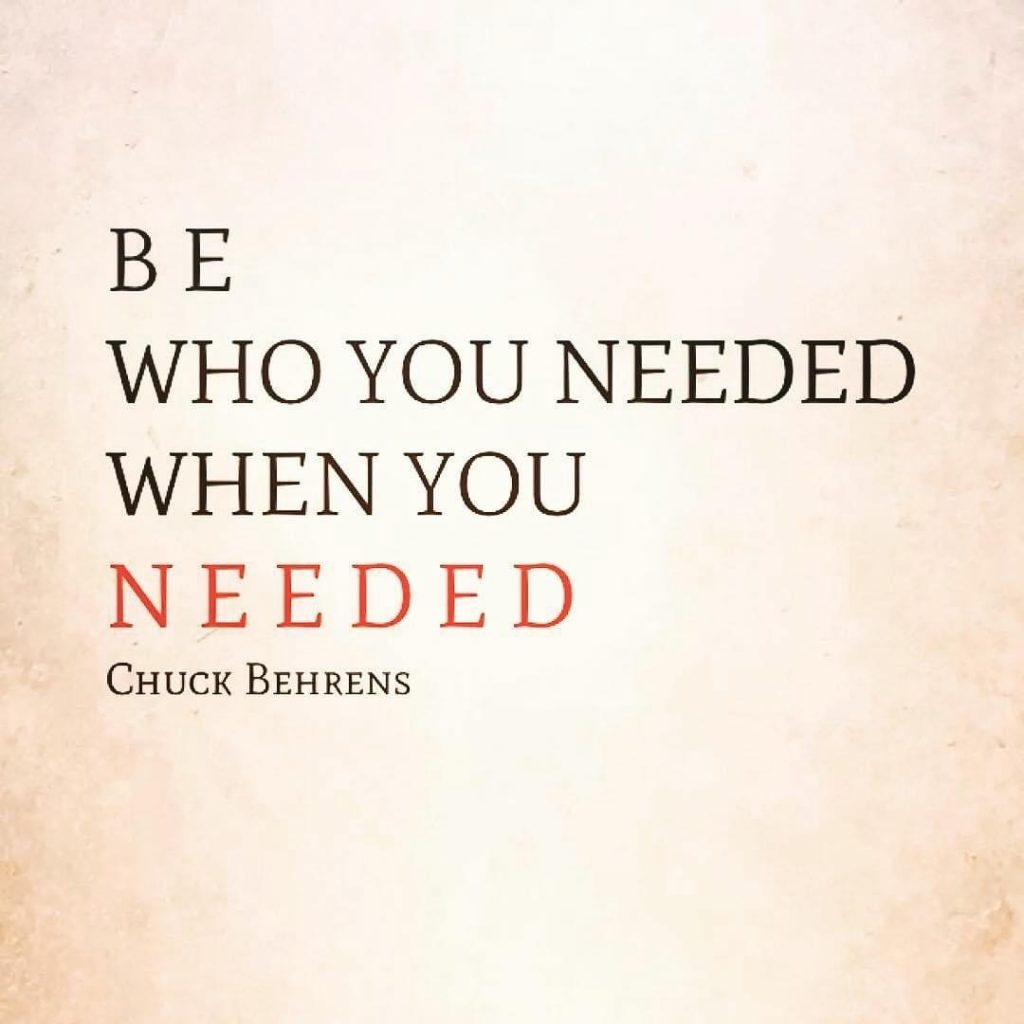
CHANGEMAKING
C H A N G E M A K I N G
. . .isn’t always about launching and scaling new ventures and initiatives. Sometimes it’s about turning an everyday moment into a moment of positive change. These are opportunities that we can’t plan for, but that when they appear, give us a chance to step up, take action, and change someone’s life. Some call that microleadership. . .I merely call it CHANGEMAKING or better, LIFECHANGING and the best part about THAT is everyone of us is capable of making IT happen at any time with anyone. . .This video is a moving example of how we all can have impact, anywhere.
Watch this barber shave off his own hair in unity with a cancer patient shaving hers and see how these small acts can add up to huge impact and then go and DUPLICATE IT as often as you can, everywhere you can, with whoever you can. . .
Being a CHANGEMAKER is being A Caring Catalyst on steroids
K I C K
I T
U P
ENLIGHTENED FIND: HILLBILLY WISDOM
A pile of books at the bottom of the stairs gave way to the gravity that could no longer be denied and down they fell like uncareful Humpty Dumpty’s that could be warned but not taught. . .or maybe it was Billy and Phyllie, two little kittens we recently brought home that run willie-nilly every where. . .
OUT FELL
an old newspaper clipping from my Seminary days back in Lexington, Kentucky. Was it from the Louisville Courier or the Lexington Herald. . .I’m not sure or much care. The yellowing that age brings to that fragile page made this message even more loreful
𝐎𝐥𝐝 𝐇𝐢𝐥𝐥𝐛𝐢𝐥𝐥𝐲 𝐖𝐢𝐬𝐝𝐨𝐦:
Your fences need to be horse-high, pig-tight, and bull-strong.
Keep skunks, bankers, and politicians at a distance.
Life is simpler when you plow around the stump.
A bumble bee is considerably faster than a John Deere tractor.
Words that soak into your ears are whispered, not yelled.
The best sermons are lived, not preached.
If you don’t take the time to do it right, you’ll find the time to do it twice.
Don’t corner something that’s meaner than you.
It don’t take a very big person to carry a grudge.
You cannot unsay a cruel word.
Every path has a few puddles.
When you wallow with pigs, expect to get dirty.
Don’t be banging your shin on a stool that’s not in the way.
Borrowing trouble from the future doesn’t deplete the supply.
Most of the stuff people worry about ain’t gonna happen anyway.
Don’t judge folks by their relatives.
Silence is sometimes the best answer.
Don‘t interfere with somethin’ that ain’t botherin’ you none.
Timing has a lot to do with the outcome of a rain dance.
If you find yourself in a hole, the first thing to do is stop diggin’.
The biggest troublemaker you’ll ever have to deal with watches you from the mirror every mornin’.
Always drink upstream from the herd.
Good judgment comes from experience, and most of that comes from bad judgment.
If you get to thinkin’ you’re a person of some influence, try orderin’ somebody else’s dog around.
Live a good, honorable life. Then when you get older and think back, you’ll enjoy it a second time.
Live simply. Love generously. Care deeply. Speak kindly. Leave the rest to God.
Hmmmmmmmmmmmmmmmmmmmmmmmmmmmmmm. . .
Kind of makes me wonder what will fall out another pile of books that gravity overpowers
or the kittens unknowingly knock over
for my next
Enlightened Find. . . .
THE CONFUSING

I Question
what I QUESTION
A L L
W A Y S
and the
BIGGEST
QUESTIONING OF ALL
is when I
QUESTION
NOT AT ALL
and this
in
UN-MATHEMATICAL TERMS
is
THE CONFUSING
. . .GET IT?
It’s the most precarious
balancing act
of all time:
THAT
razor thin line
bEtWeEn
CURIOSITY
(which we know kills the cat)
and
QUESTIONING
wanting to truly
experience
the
WHY
the
HOW COME
the
WHAT FOR
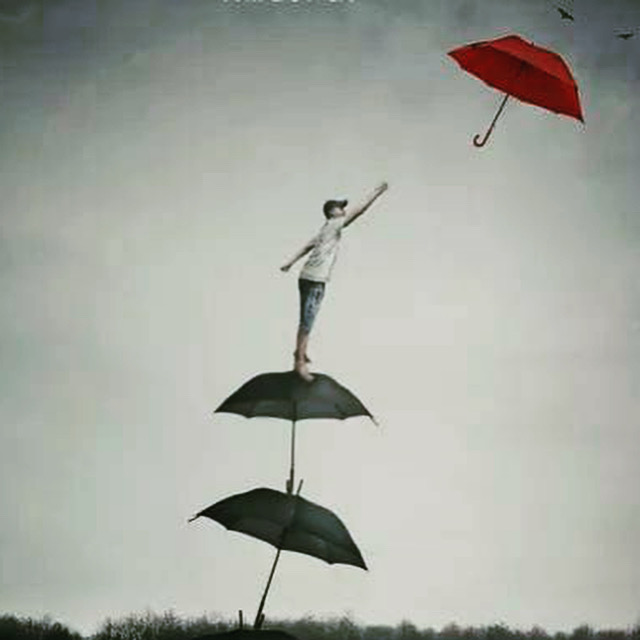
THE CURE. . .
QUESTION EVERYTHING
HOW COME,
IT
WHAT FOR,
IT
WHY
IT
like a little kid
asking for an ice cream cone
on a hot Summer’s Day
before Dinner
you’re not going to get
until later
and keep
A S k I n G
until you get the
p r o v e r b i a l
“BECAUSE I SAID SO”
and then risk
the ice-cream cone
the late dinner
an early bedtime
an extended
TIME OUT
by starting all over again
with a not-not-so-whimpered:
W H Y. . .
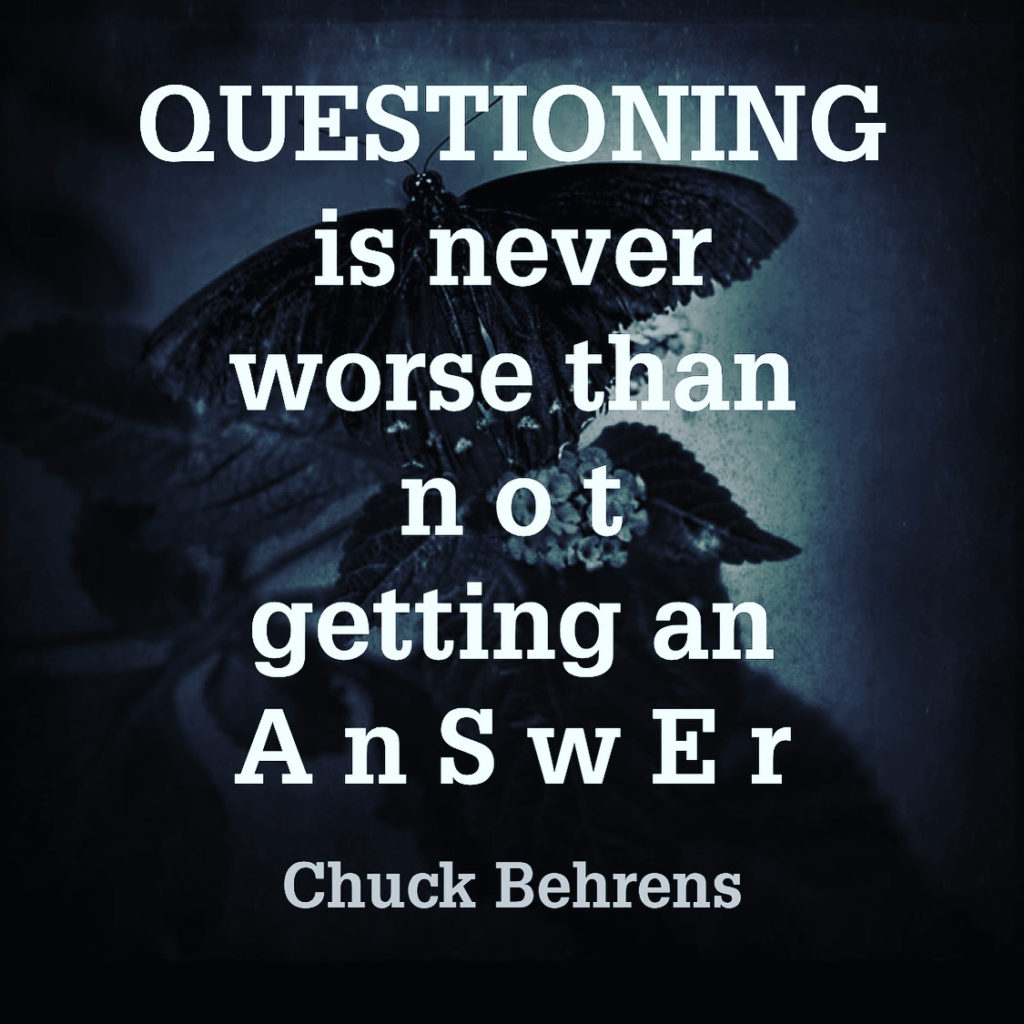
THE MORAL:
Never give up the
Q U E S T I O N I N G
for a
JUST BECAUSE
. . .sometimes the greatest way to remove
THE CONFUSING
is the be
(the inexplicable)
the cause of it
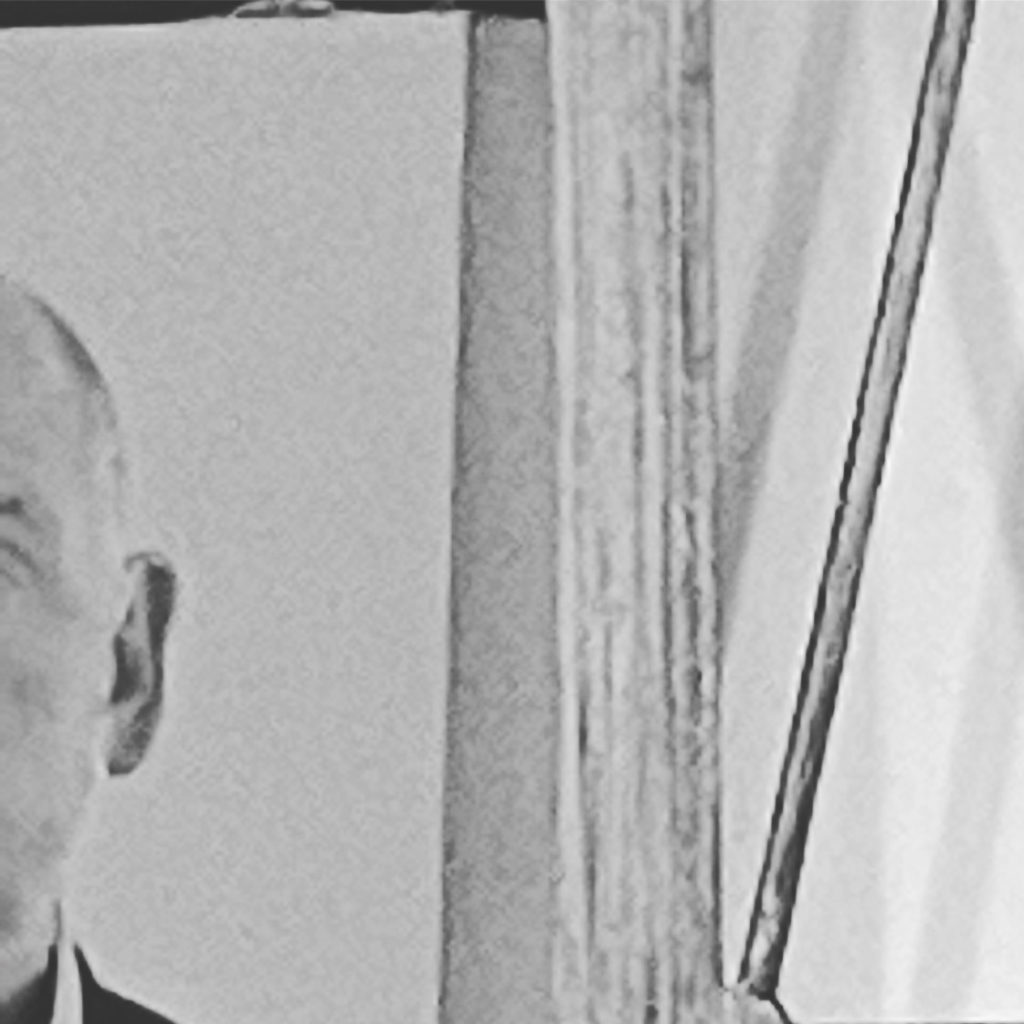
. . .OR THE CHIEF REMOVAL OF IT
An Original Caring Catalyst
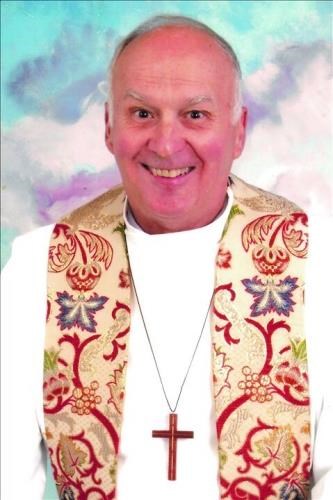
Look familiar. . .
Even remotely aware of him. . .
The following might not be much more of a clue
to the World
or even to a select few:
On July 1, 2021, Rev. Dr. Roger Raymond Fischer, of Washington, was taken by God’s twin Angels, Goodness and Mercy, who came to pick Roger up, and they did. So God wrapped his arms around Roger and said, “Well done Good and Faithful Servant.” His was a life well done. Born June 1, 1941, in Washington, he was the son of Raymond and Louise Gartley Fischer.
Roger was a 1959 graduate of Washington High School. While in college, Roger worked as an American Red Cross, YMCA life guard and saving and swimming instructor. Roger received a Bachelor of Arts in Mathematics and Physics from Washington and Jefferson College in 1963. He received a Master’s Degree with Honors from the Lutheran Seminary at Gettysburg in 1991. In 1998, he was granted a Doctor of Ministry Degree from the Pittsburgh Theological Seminary as the author of “Christian Advocacy and the Local Congregation.” Roger was ordained January 13, 1990, in First Lutheran Church, Washington. He served numerous churches in Southwestern Pennsylvania and West Virginia. The last congregations that he served were Calvary Lutheran in Scenery Hill, Buena Vista Presbyterian and Hyland Brotheran.
While working as a research engineer for Jones and Laughlin Steel, Roger was elected to the Pennsylvania House of Representatives from the 47th District, serving from 1966 to his retirement in 1988. At age 25 he was one of the youngest members to serve in the history of the Pennsylvania General Assembly, serving also as Chairman of the House Education Committee and on the State Board of Education. Roger served for nine terms as President of the Association of Retired Pennsylvania House of Representatives and Senate Members. He was elected to the Washington School Board in 1965 and inducted into the Pennsylvania Voter Hall of Fame for voting in every primary and general election since 1962.
Commissioned in 1966, Roger served as a Lieutenant Colonel U.S. Air Force Reserve. He was a member of the American Legion Post 175, 40 et 8, Sons of the American Revolution, and Sons of the American Revolution Chaplain. He was a Boy Scout merit badge counselor and a member of the Order of the Arrow. Roger was also a member of the Washington Lodge No, 164 Free & Accepted Masons, Washington Royal Arch Chapter No. 150, Jacques DeMolay Commandery No. 3 Knights Templar, and Noble of the Syria Shrine.
Roger enjoyed a lifetime of sports and fitness as demonstrated by becoming a two time finisher of the Ironman Triathlon in Hawaii. Additionally, he ran many other triathlons and marathons including Boston (four times), New York (four times), Pittsburgh, Honolulu and Philadelphia. At age 74, Roger completed the Disney World Marathon. He was a member of the Pennsylvania Council on Physical Fitness and was founder and race director of the “Washington Express” 10K run. In 2008, he bicycled across America in sections. Roger was inducted in Washington-Greene Chapter of the Pennsylvania Sports Hall of Fame and was unanimously elected to the Executive Committee. Roger was a life member of the Appalachian Trail Club, Keystone Trail Association, Warrior’s Trail Association and the Maine Appalachian Trail Club. Across 32 years, hiking in sections, Roger completed the entire 2,174.1 mile Appalachian Trail on September 17, 2004.
In 1998, Roger received an Honorary Doctor of Divinity from Washington and Jefferson College and delivered the Baccalaureate sermon for his son Steven’s commencement. In 1994, Roger delivered the main address for W&J’s Honors Convocation.
Roger treasured his time with his family. He enjoyed world traveling with his wife Kitty to places such as Europe, South Africa, Australia, Tahiti and China. He was very happy to have visited all the continents except Antarctica.
Roger is survived by Catherine “Kitty” Trettel Fischer, his wife of 48 years; two sons, Roger Raymond II (Marcia) and Steven Gregory (Heather); and a daughter, Catherine “Katy” (John) Herold; and five grandchildren, Abigail, John “Jack” and Maxwell Fischer, and Elijah and Ezekiel Herold; and a brother, Terry.
Obituaries are almost the Charlie Brown teacher of the newspaper or what’s left of them. They are the Wawa Wawa Wawa summations of Someone’s life. At best, they provide a summary of how a person was; what they leave behind, and specifically who is most affected because of their death. But make no mistake, there’s much, very much that they leave out.
Roger’s obituary gave no smidgen of a hint of all of the lives he Touched, specifically mine. I’ve heard it said that when we are born each of us are given a fingerprint which is distinctive to ourselves; it’s a fingerprint that no one else has or can ever have so that we can make an imprint on other lives that no one else can or ever will. Roger more than did that for, TO ME!
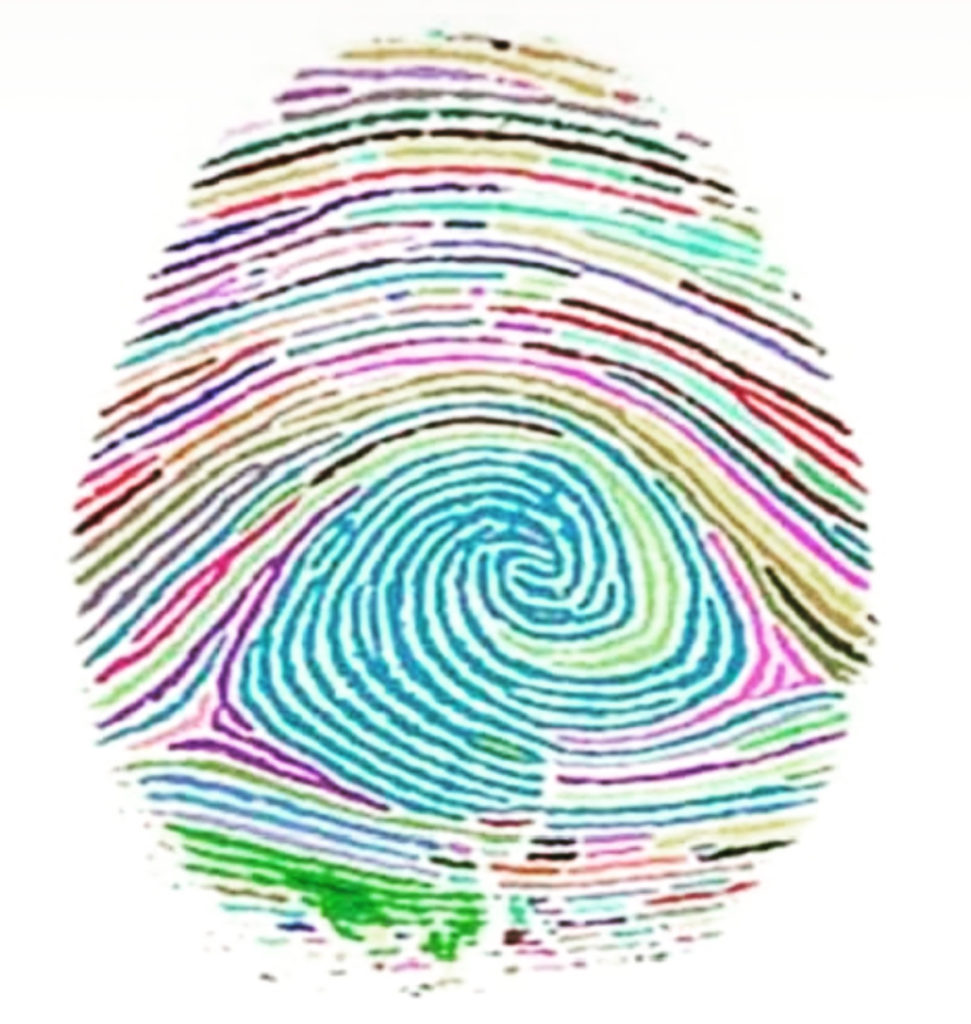
I can’t remember a time when I didn’t know Roger; but specifically he was a Sunday school teacher of mine in seventh and eighth grade and also taught our Catechism class at First Lutheran Church in Washington, Pennsylvania. It was there that I remember one Saturday morning when I was not allowed to go to basketball practice because I had to go to Catechism class at 9 o’clock in the morning and I literally erupted in the class, complaining about how stupid this was and how much I did not want to be there and how I really HATED the Church; ANY CHURCH! Even though there was about 14 or 15 in the class, Roger treating me like I was the only one that was there that day, at that moment and he didn’t react; he responded. The fact he congratulated me and told me how brave it was for me to speak my truth was huge and affirming. And then, with one simple question, he convicted, changed my life path:
“WHY DON’T YOU DO SOMETHING ABOUT IT?”
Which made me irrupt even further as if you could reload a fire crackers it was already burning hot.
“DO SOMETHING,!” I yelled. “I’M JUST 13 YEARS OLD! WHAT CAN I DO?”
And again, in pure Roger fashion, he replied back as if I was the only person there, the only person in the World that had his ear, his attention:
“ANOTHER GOOD POINT, CHARLIE, (something I hated anyone to call me) BUT IT HAS BEEN MY EXPERIENCE IF YOU WANT TO CHANGE SOMETHING, YOU DON’T COMPLAIN ABOUT IT FROM THE OUTSIDE, YOU GO INSIDE AND DO SOMETHING ABOUT IT!”
B U S T E D
and even more
C O N V I C T E D
Up until that point when people would ask me, “what are you gonna do when you grow up?” I would, without hesitation answer, I was going to be a professional basketball player and I was going to be a teacher and a coach but never, no way ever, EVER a minister.
Now countless times over the past nearly 50 years when people ask me why did you become a minister, they kind of wait for me to give him this great spiritual, unbelievable mountaintop experience testimony, and instead I tell them it’s because I hate the church and then I tell them the story about Roger and me one Saturday morning at a Catechism class that I didn’t want to be at, but now ever so grateful that I attended that day.
We kept in touch throughout the years and he knew the personal impact of that story because I made sure that I told him and with every chance that I got and profusely thanked him and the times I blamed him for what he did to me by making me go into the ministry. He told me never to expect an apology and I told him I wasn’t asking for one.
So after all the Wawa Wawa Wawa Wawa–ing of a Charlie Brown teacher during this blog, you may still not know personally Roger Raymond Fisher, or even care that much, but mine is a shore his Tsunami has radically wrecked that made it impossible to rebuild in a way my imagination could ever conjure up; it’s caused severely significant after shocks that have created tidal waves in me that have touched countless other shores, Roger had no understanding or fathoming; still are. Little did I know that Roger was A Caring Catalyst long before I knew what one was, let alone striving to be a better one each day. There’s only five true words that are left to be said by me. But oh my, are they most sincere:
THANK YOU;
SEE YOU LATER
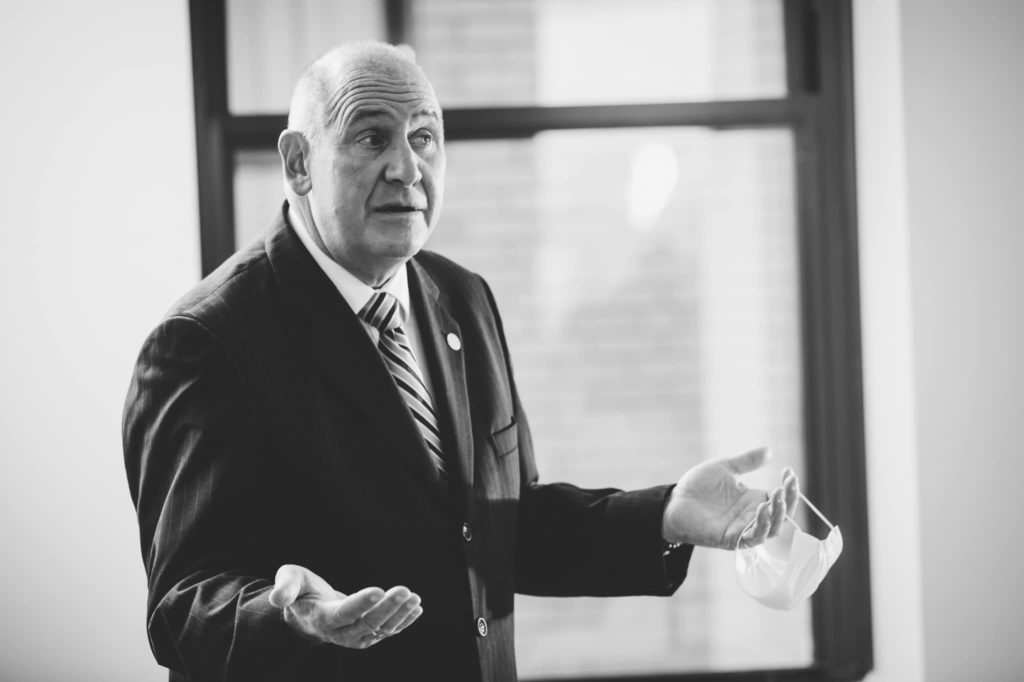
WAWAWA THAT, Charlie
A (SELF) CARING CATALYST

FAMILIAR. . . ?
Sometimes some of the worst care
is the lack we give
O U R S E L V E S. . .
Being A Caring Catalyst to Others
begins with being
A Caring Catalyst
to Ourselves
IT IS THIS SIMPLE:
We do the best we can with what we know at the time. . .
It is VERY unloving to expect more;
We often were not given the knowledge
or the tools while we were young. . .
Pssssssssssssssssssssssssssssssssssssssssssssssssssssst:
Life is about learning.
Sometimes that learning can be painful.
Our challenge is that once we have learned the lesson
that we do not continue to repeat it. . .
For many of us, however,
we may have to go around the track a few times
before we are able to count it as a
m i l e. . .
Uhhhhhhhhhhhhhhhhhhhhhhhhhhhhhhhhhhh
There is no finish line
(PERIOD)
There is no competition
(PERIOD)
Self forgiveness is necessary on a daily basis
and SELF-LOVE even more needed
(MORE OFTEN)
in order to bring Compassion Care. . .
BEING A CARING CATALYST
means acknowledging
YOU DID THE BEST YOU COULD
. . .Now let it go

TOUGH COMPASSION

I’ve never been a big fan of
TOUGH LOVE
mostly because I
SUCK LIKE A STRAW
at showing/doing
TOUGH LOVE
so when I heard about
TOUGH COMPASSION
well. . .
What Does “Tough Compassion” Look Like in Real Life?
Tough compassion means speaking up, setting boundaries, and making uncomfortable choices for the greater good.
ELIZABETH SVOBODA, is a writer in San Jose, CA, and a regular contributor to Greater Good. She is the author of What Makes a Hero?: The Surprising Science of Selflessness. Her newest book, for kids, is The Life Heroic. And she took a TOUGH Look at TOUGH COMPASSION
On a podcast episode, psychologist and GGSC founding director Dacher Keltner described the idea, explaining how some contemplatives practice a form of kindness with a decided edge.
“In the deeper traditions of compassion, like a lot of the Buddhist traditions, they have an idea of tough compassion—to step in and, in a good way, guide the person to a different form of behavior or out,” said Keltner.
The concept seems so at odds with the way most Americans, especially women, are socialized to think about compassion. The compassion-centered lifestyle sketched in breezy Insta posts involves attending idyllic retreats and practicing meditation. If compassion were a Pantone Color of the Year, it would be whispery rose quartz.
In short, our culture presents a clear picture of what compassion is supposed to look like. And giving someone else an honest piece of our minds isn’t it.
It might be time to paint a new picture of compassion. When it comes to reducing suffering in the world, an uncompromising approach to compassion often trumps a pastel-hued one—and it’s an approach you can try when other attempts to engage with difficult people fail.
“The Dalai Lama always had this greater good analysis,” Keltner later told me. “Like, ‘What does it bring about? Is being hard in the moment going to bring about greater well-being or kindness for a lot of people?’”
The case for tough compassion
Tough compassion is gaining traction because the rose-quartz version is proving so unequal to the present moment, which has been defined by human failures to meet challenges posed by the pandemic, widespread inequality, and climate change.
Of course, there will always be a “soft” side to compassion. It’s always crucial to learn how to be a calm sounding board or comfort grieving loved ones. But warm and fuzzy compassion has little power to sway relatives who spout conspiracies, stop close friends from radicalizing online, or embarrass leaders who tout equality while harvesting the fruits of privilege.
In the Buddhist contemplative tradition, the goal of true compassion is to find ways to promote the least suffering for everyone. In this broader framing, nodding along with someone’s bigotry, bullying, or falsehoods for the sake of preserving that relationship is the opposite of compassion. It interferes with peace-building on a societal level, even though it might seem on the surface like a nonviolent act.
If you’re a parent, you probably practice small-scale tough compassion on a daily basis, vetoing pre-dinner snacks or enforcing homework time before kids go out. Larger-scale tough compassion flows from a similar source: the willingness to bear—and even inflict—some discomfort in the moment to promote longer-term well-being.
“You have this sense, and you’re in the position to assume, that this is a struggle they have to face,” Keltner says. “It’s good for them.”
The Dalai Lama has spoken of the importance of this kind of tough love. It means that if your aunt makes an offhand racist remark, or your work buddy insults a colleague, tough compassion involves speaking up—without rancor, but with conviction—if your goal is to promote less suffering for all.
“By withdrawing from the conversation, you don’t force the other person to really have to encounter a different set of values,” says Medical College of Wisconsin psychologist Zeno Franco, whose research focuses on community engagement.
In committing to tough compassion, you buy into a certain kind of risk-benefit calculus. You accept the discomfort involved in hopes that the other person will consider a different way of engaging, one that will carry over into her interactions with others, and perhaps even their interactions with those close to them.
“Our actions implicate a lot of people,” Keltner says. “You’ve got to step back and think about all the utilities and consequences downstream.”
Tough compassion in practice
It’s one thing to endorse the tough-compassion approach and quite another to try to make it work. What does it actually look like to show uncompromising compassion in the moment? And when someone in your life does something that’s actively harmful, what’s the best way to guide them without outright coercing or controlling?
In Franco’s view, tough compassion involves conveying that you value someone as a person while disagreeing openly with what they are doing.
When he calls loved ones out for hateful or harmful behavior, he’s not shy about saying what he thinks. But at the same time, “I try to remain accessible as a human being who can be vulnerable, who can be hurt, and who can appreciate the person,” he says. “Part of that is thinking about how to respond in a way that is not designed to escalate, but almost to reach past the ‘facts’ or points that they are making to where what they are saying impacts me at an emotional level.”
A powerful way to convey this emotional impact is through storytelling, says Juliana Tafur, a filmmaker and founder of the Listen Courageously project. If you want to hold a relative accountable for homophobic remarks, for instance, you can describe the effects of that kind of behavior on people close to you: “My good friend is gay, and she hears insults like that all the time. She’s also been attacked in public. Because of that, it’s hard for her to trust that people are going to respect her as a human being.”
With storytelling, you can take a tough stance and show the other person the results of their actions without launching a direct attack. When you do this, “you’re really communicating—in a way that is enveloped in compassion—your fundamental boundaries, what you can and cannot accept, and inviting the other person into that conversation,” says Tania Diaz, a psychologist at Albizu University. Studies show that this story-based approach can create significant change in people’s worldviews.
Even when you know you’ll create more lasting change through dialogue than exclusion, you may have to push past significant inner resistance to engage in these conversations. Showing any kind of compassion—even tough compassion—to a person who behaves harmfully can feel like a form of surrender, or like tacit acceptance of their behavior.
But from the broader perspective of reducing suffering, what might seem like fraternizing with the enemy can be a potent way to guide someone on to a less toxic path.
“A lot of people have this misunderstanding that, if I engage or listen, I am somehow going to be tainted, or I’m going to be influenced,” Diaz says. When she facilitates these conversations, she’s found that quite the opposite is true. “When you listen, truly understand, and get curious, it creates space for the person to think a little bit differently.”
To avoid shaming the other person into submission—a tactic studies show can backfire by making people withdraw from the situation—you can go on to explain how a change of course would be a win-win scenario, for the other person as well as for the world at large.
“I show them what life might be like after they change and explain the positives,” says Dian Grier, a licensed clinical social worker in Mojave, California. That might mean pointing out that your homophobic relative will have a much better relationship with gay nieces and nephews if he chooses to engage with them differently.
Holding fast
Perhaps the biggest challenge of practicing tough compassion is staying internally grounded while emotional storms rage. When you take a stand, other people may fire back with remarks that send your heart hammering. If you’re not prepared, that physical reaction can propel you straight into a “lizard brain,” fear-based mindset where you’re more likely to fall back on old, reactive rules of engagement.
Tough compassion, by contrast, is like an anchor pole that holds fast no matter how hard the rope tugs on it. “In those moments, I’m trying to be fully present and yet no longer upset,” Franco says. “The intent of every word is thought through to take the argument almost to a different place.”
To hone this kind of in-the-moment composure, it can help to write down some thoughts beforehand about what you want to say to someone or the kind of stories you want to tell. Then, once you’re up for it, schedule a real-life conversation or Zoom. This face-to-face connection often feels more humanizing than a long text thread, and deciding where and when it happens can help you feel more in control of the process.
But while tough-compassion conversations can be fertile ground for shifting others’ perspectives, your own well-being should always remain front and center. To steer clear of potentially traumatic encounters, “you need to know if the other person is in a position to be willing and able to engage in that conversation with you,” Tafur says. “And I think you’ll know that right off the bat.”
If someone ridicules your attempts at dialogue or continues to sling insults, “the tough-compassion act is to leave or disengage,” Keltner says. Exiting from a harmful situation can be its own form of uncompromising truth-telling.
In line with the Buddhist teaching of dropping attachment to results, the tough-compassion approach is simultaneously about holding fast and letting go. At its core, tough compassion is about “creating space for dialogue to unfold,” Diaz says. “Ultimately, that person decides if they’re going to shift.”

So. . .
are you a
TOUGH COMPASSION
Champion. . .
For the Good of ALL
it’s not just a mere Question
anymore
. . .it’s desperately in need of an
A N S W E R
DESIDERATA
DESIDERATA
. . .Latin for
THINGS TO BE DESIRED
is a 1920’s Max Ehrmann poem
brought back to Life
and Music in 1971
by Les Crane
and even though the
poem is over 101 years old
and the song is 50 years old
it could have not be more
r e l e v a n t
today than when it was first written
or brought to music
because
NOW
as
THEN
and most likely
FOREVER
we constantly need reminding
You matter.
You’re important.
You’re loved.
Your presence on this earth
at this very moment
makes a difference
whether you see it or not.
A N D
so does every single person
you know
or meet
hate
or love
. . .THE BIG QUESTION
“When are you going to act like it?”
isn’t as important as the
GREATER ANSWER
the World is desperately waiting to
E X P E R I E N C E. . .
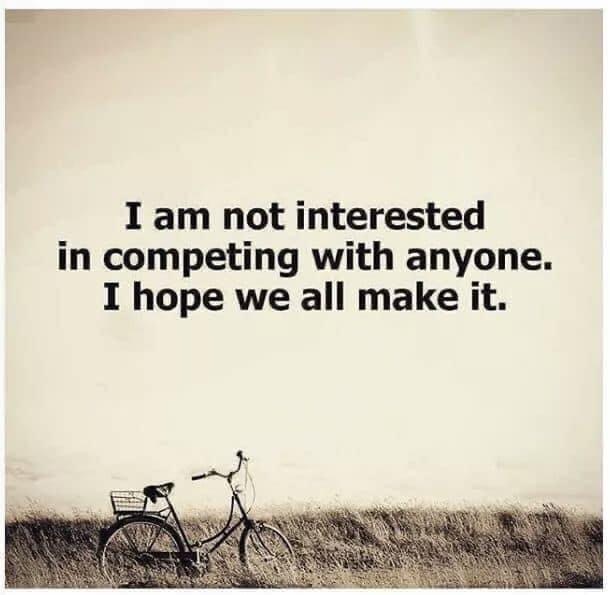
YOU ARE A CHILD OF THE UNIVERSE
NO LESS THAN THE TREES OR STARS
YOU HAVE A RIGHT TO BE HERE
(and so does everyone else)
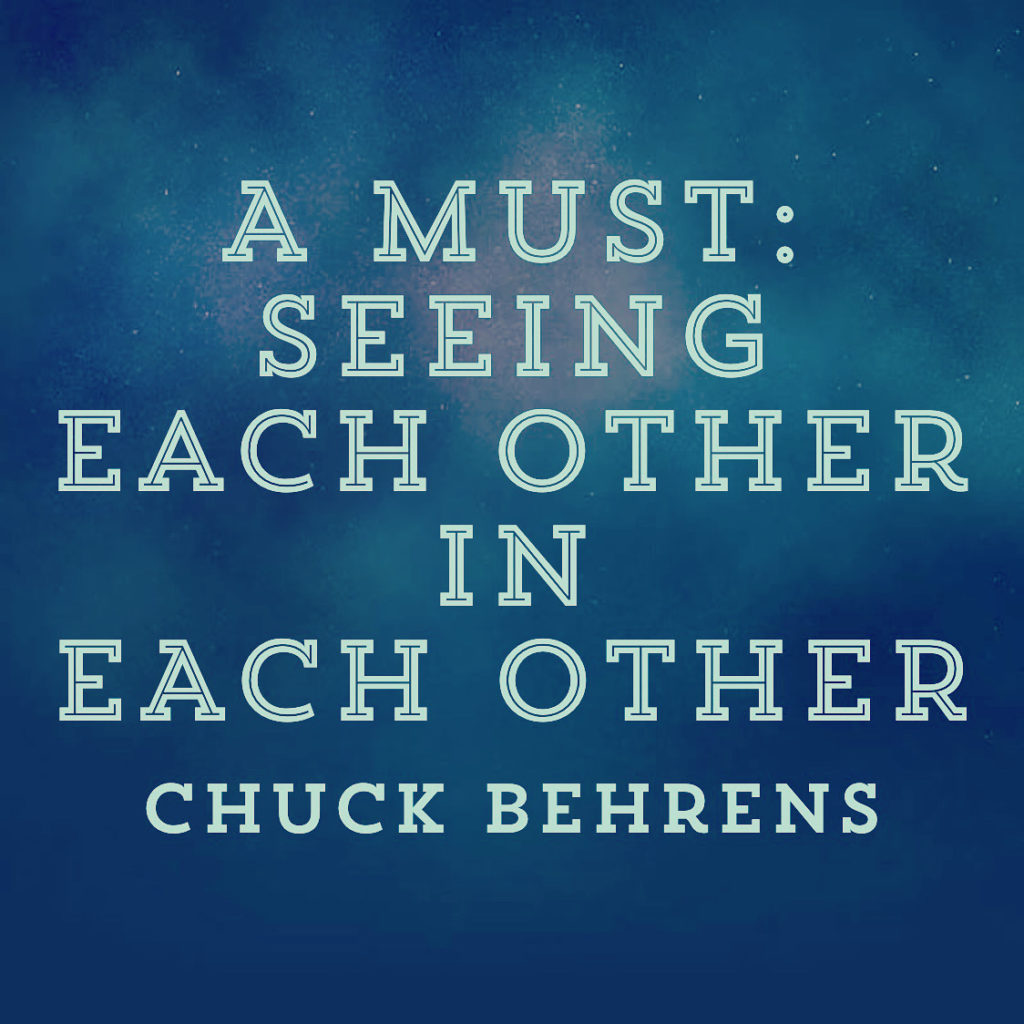
the next time
you refuse to sing
because you’ll never
fill a stadium
or decline the joy of dance
for fear of looking
ridiculous
or you resist risking
the new adventure
because you’re
not entirely ready or
you dim your shine
because you’re not
completely healed and whole
the next time
you hold yourself suspect
because you’re not
entirely qualified
just remember
a bird doesn’t sing
because it’s talented
a bird sings because
it has a song
the moon doesn’t only shine
when it’s whole
it can show up with
a single sliver of itself
and still light an entire
night sky
show up. sing. shine.
the world needs you
as you are.
© Angi Sullins – www.AngiSullins.com

(Thank you, Lynne Maragliano)
HARD BALL
Hardball is a 2001 American dramedy film
directed by Brian Robbins.
It stars Keanu Reeves, Diane Lane and D. B. Sweeney.
The screenplay by John Gatins is based on the book
Hardball: A Season in the Projects by Daniel Coyle
I was reminded of it
PAINFULLY
again
this past week with the shootings in Colorado
and even at one of my favorite eateries,
MY FRIENDS on W 117th and Detroit. . .
The movie literally is 20 years old
and most people probably wouldn’t even of thought Keanu Reeves
ever staring in this movie. . .
But those who saw
said it might’ve been his best role. . .
Why? Mostly because of the funeral clip that you just witnessed
after his young unsuspected star
was gunned down in crossfire. . .
And just what was so powerful about that clip. . . ?
Simply the power of a life,
a small wave
that became a tsunami
and literally caused a tidal wave
in all the other lives that small
powerful Ripple
havoced on the shores
it touched
and forever changed geographical landscapes. . .
Do you have that power in you?
Has the wave long lost its umph and its impact?
Check your pulse. . .
If you still have one
no matter how powerfully strong
or so seemingly significantly weak
it’s still tsunami causing. . .
You still have the power
to change the geographical landscapes
of every shore your wave hits. . .
Don’t waste a drop
. . .or a second
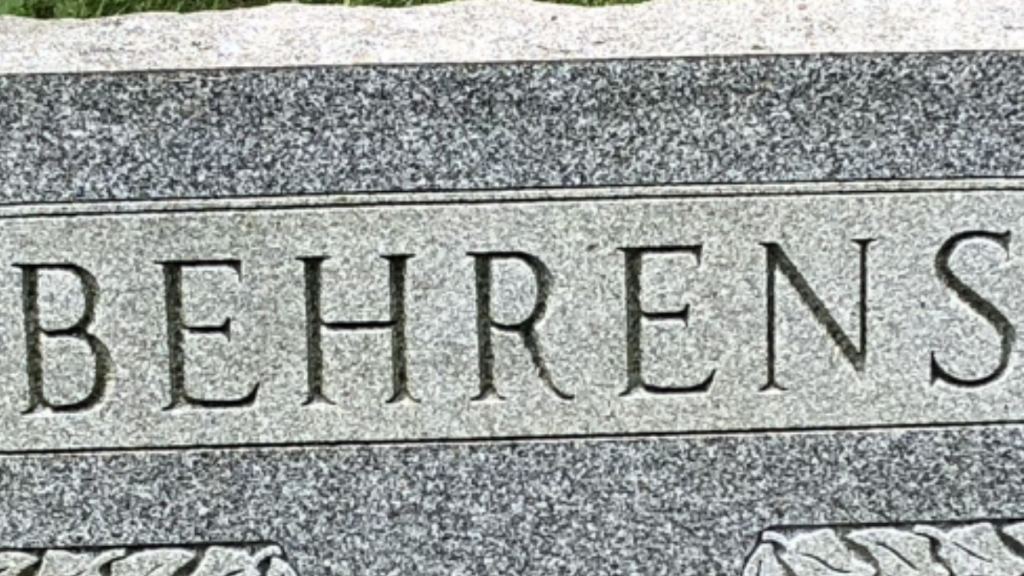
Make sure you live your Eulogy
before you become it. . .
